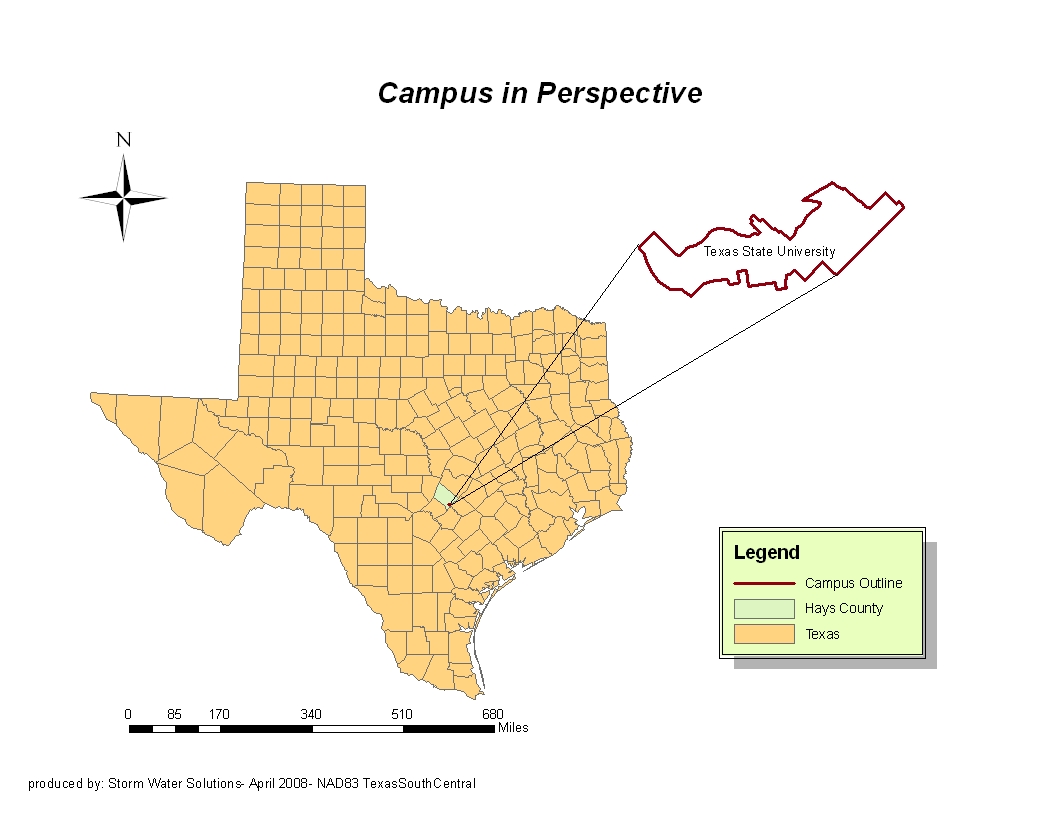Current Drainage System
Proposed Pond Locations
PowerPoints
Initial Proposal
Progress Report
Final Report
Maps
Meet The Team
Geography Dept |
Purpose
The San Marcos River is one of the most pristine and ecologically sensitive rivers in Texas. The river is not only aesthetically pleasing but it is also used for recreation such as swimming, snorkeling, diving, canoeing, kayaking and fishing. Texas State University is located on and just uphill of the San Marcos River, therefore, when it rains much of the storm water runoff from campus ends up directly in the river.
Storm water runoff, especially from impervious surfaces, when left untreated contains many pollutants and can reduce the water quality of any given water shed. Detention ponds are one of the most effective Best Management Practices (BMP) for controlling and cleaning storm water before it reaches our rivers.
Texas State’s current storm water drainage system is out of date and has not kept up with the construction that has occurred over the past several years. There are some storm water controlling devices, but they do not capture a majority of storm water from impervious surfaces. The goal of our research is to identify areas where storm water runoff can be collected and filtered in a detention pond before entering the San Marcos River. We will also look at future construction to ensure that these locations can accommodate future runoff from new buildings and parking structures.
Scope
Storm Water Solutions only looked at the drainage areas on Texas State University’s main campus and we our analysiswas limited to within property lines. We focused solely on the campus drainage system. Analysis of the city of San Marcos’ drainage system on parts of campus will not be included because it is too broad and will require more time than this project can offer.
Our team will only locate the potential sites for detention ponds using GIS tools and will not be involved in the actual construction of the ponds. Although we know how these ponds operate and perform, we did address the engineering of these ponds.

|